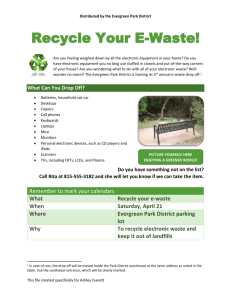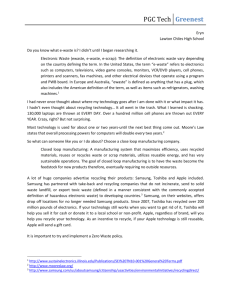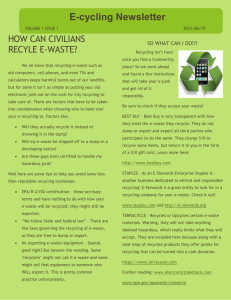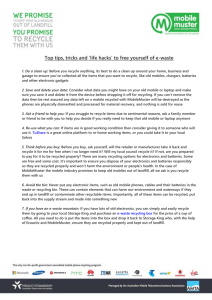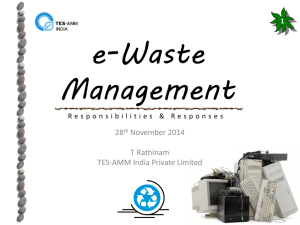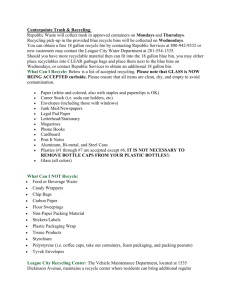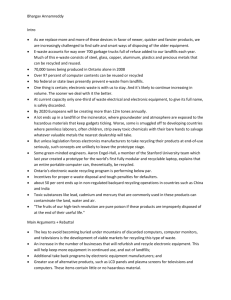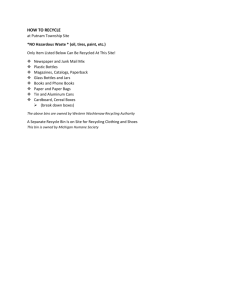Recommendations (e
advertisement
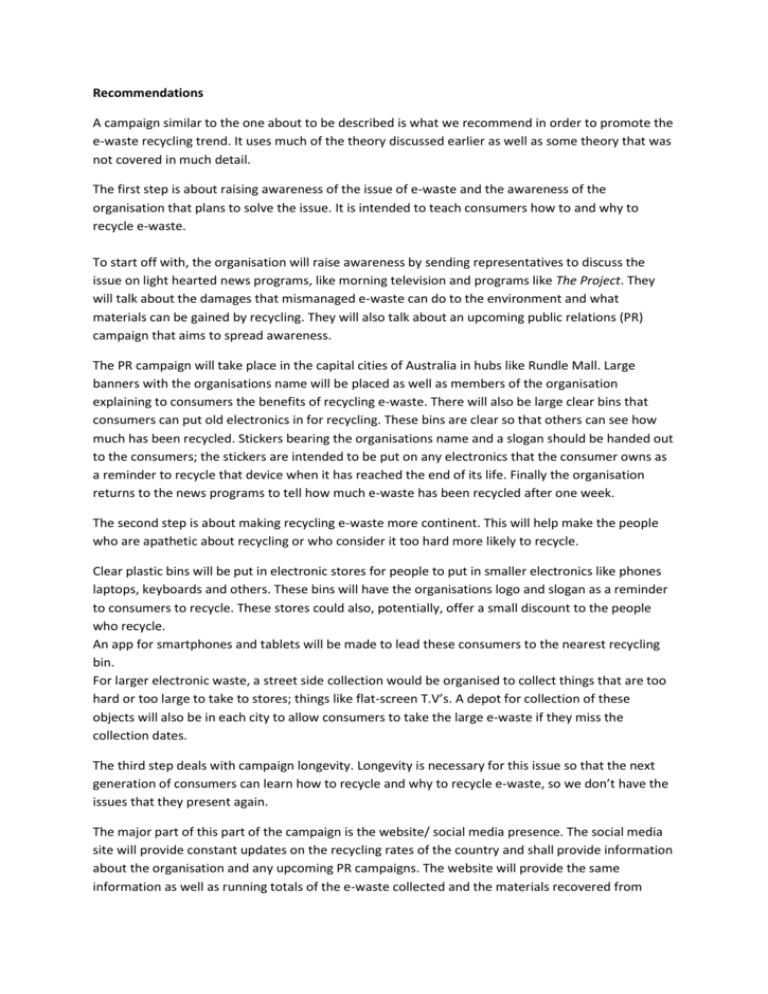
Recommendations A campaign similar to the one about to be described is what we recommend in order to promote the e-waste recycling trend. It uses much of the theory discussed earlier as well as some theory that was not covered in much detail. The first step is about raising awareness of the issue of e-waste and the awareness of the organisation that plans to solve the issue. It is intended to teach consumers how to and why to recycle e-waste. To start off with, the organisation will raise awareness by sending representatives to discuss the issue on light hearted news programs, like morning television and programs like The Project. They will talk about the damages that mismanaged e-waste can do to the environment and what materials can be gained by recycling. They will also talk about an upcoming public relations (PR) campaign that aims to spread awareness. The PR campaign will take place in the capital cities of Australia in hubs like Rundle Mall. Large banners with the organisations name will be placed as well as members of the organisation explaining to consumers the benefits of recycling e-waste. There will also be large clear bins that consumers can put old electronics in for recycling. These bins are clear so that others can see how much has been recycled. Stickers bearing the organisations name and a slogan should be handed out to the consumers; the stickers are intended to be put on any electronics that the consumer owns as a reminder to recycle that device when it has reached the end of its life. Finally the organisation returns to the news programs to tell how much e-waste has been recycled after one week. The second step is about making recycling e-waste more continent. This will help make the people who are apathetic about recycling or who consider it too hard more likely to recycle. Clear plastic bins will be put in electronic stores for people to put in smaller electronics like phones laptops, keyboards and others. These bins will have the organisations logo and slogan as a reminder to consumers to recycle. These stores could also, potentially, offer a small discount to the people who recycle. An app for smartphones and tablets will be made to lead these consumers to the nearest recycling bin. For larger electronic waste, a street side collection would be organised to collect things that are too hard or too large to take to stores; things like flat-screen T.V’s. A depot for collection of these objects will also be in each city to allow consumers to take the large e-waste if they miss the collection dates. The third step deals with campaign longevity. Longevity is necessary for this issue so that the next generation of consumers can learn how to recycle and why to recycle e-waste, so we don’t have the issues that they present again. The major part of this part of the campaign is the website/ social media presence. The social media site will provide constant updates on the recycling rates of the country and shall provide information about the organisation and any upcoming PR campaigns. The website will provide the same information as well as running totals of the e-waste collected and the materials recovered from recycling. The website will also provide information on how to get involved with the organisation and how the recycling process works. There will also be a number of smaller PR campaigns that are similar to the original. These campaigns will happen on the same day annually. This plan will work to solve the three major issues that were mentioned earlier in this report.


